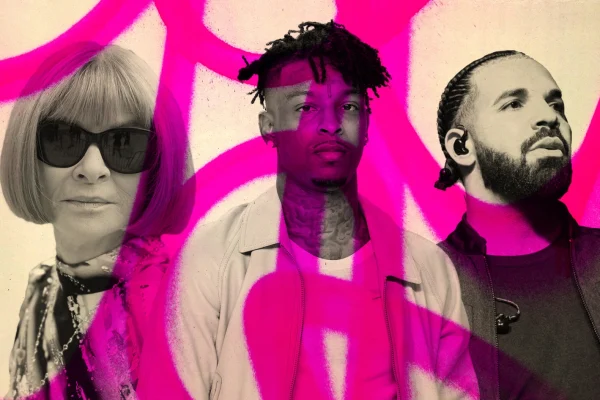Torunstyle News
The case brought by Vogue against Drake and 21 Savage
An expert in trademark law comments on the fashion magazine’s complaint against the rappers for their “Her Loss” publicity stunt

NO MATTER WHAT Drake and 21 Savage hoped to achieve with the faux-Vogue issue that launched the pseudo-media blitz ahead of the joint album Her Loss – impressive album promotion, thoughtful cultural commentary, just general hijinks, or all three – those magazines have been distributed, their covers have been plastered across surfaces tangible and digital, and they now have a lawsuit on their hands worth at least $4 million.
Condé Nast, the publisher of Vogue, filed a seven-claim lawsuit against the rappers last week, accusing them of copying their work and materials without authorization and confusing customers in the process. Trademark infringement is the main complaint. On Wednesday, a judge determined that Condé Nast had a strong case and ordered a temporary shutdown of the faux-Vogue operation, but the point had already been made.
There is a lot to consider here, according to Rebecca Tushnet, a professor of first amendment law at Harvard Law School. She told me before the ruling was made public, “I have saved this as a potential exam question because it is very much at the edges of art versus commerce. Tushnet has counseled and defended fan fiction websites in disputes with trademark owners because she specializes in trademark and false advertising law.

When courts deal with works of art, they occasionally ruminate on whether or not they ought to grant a little more latitude. If we’re going to repress art, we want a strong cause, so perhaps we should ask for more,” she suggested. “I believe that this is the reason Vogue is presenting this carefully and understandably as ‘This isn’t actually about art.’ This might have been the same thing as if [they] had been announcing a new shoe promotion. They’ll try to make it seem as though it has nothing artistic to say.
Here, Tushnet distinguishes the charges, explains why it may or may not matter, delivers her opinion on the extent Condé Nast has gone to in the name of its iconic brand, and declares one of them to be untrue.
Infringing on trademarks is the first and possibly most well-known allegation in Condé Nast’s case against Drake and 21 Savage. Which side do you believe the argument to be on?
I believe the main inquiry a judge will make is, “Is this really any different than starting your own Vogue?” Which, in contrast to a commercial stunt, would be quite obviously problematic. Therefore, courts have ruled that you have more freedom when we determine something to be art. To enable artists to engage in the experimenting that we want them to be able to, we must be willing to accept a higher risk of uncertainty. However, you still cannot make overtly incorrect assertions. And there is undoubtedly a valid assertion made here that
Regarding the art of it, it appears that the phrasing in the complaint frames Drake and 21 Savage’s mock-ups for Vogue as marketing and business. How important is the way the stunt is framed to the case?
That is a very thoughtful question. And the fact that courts have long acknowledged two different things makes it incredibly difficult. First, it’s acceptable for artists to earn a living. Therefore, we wouldn’t get a lot of art if we said that you could create art as long as you didn’t make money. What about news reporting, then? Therefore, you want to give artists some freedom, but eventually, you also want to draw the line.
The most extreme case, then, would be if someone came and said, “Here’s a new Stephen King novel,” am I correct? And it is just how I described it. It’s obvious that you’re going to fool a lot of people—and to bad effect. Therefore, just because it’s a novel doesn’t mean there isn’t any safeguard against deception.


